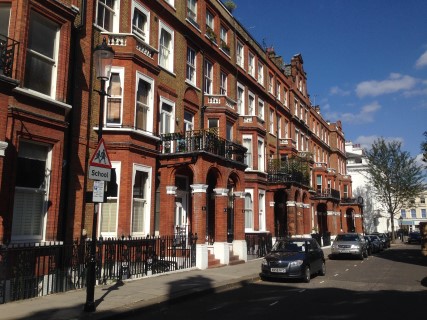The government is making strenuous attempts to curb the buy-to-let market. In April, a 3% stamp duty surcharge was imposed on the purchasers of second homes – adding £14,829 onto the purchase cost of an average-priced £494,329 residential property in London.
However, demand for privately rented homes is forecast to rise dramatically over the next decade.
Professional services network PwC says that by 2025 a quarter of households will be in the private rented sector.

This means property investors are still likely to make handsome returns from the buy-to-let market in London – if they identify the areas of the capital where demand for rental homes outstrips their supply.
These include the parts of London with good transport links to the City and West End, a high proportion of Ofsted-rated schools and good local amenities, such as green space and below-average crime rates.
The rising value of property in London over the past five years means property investors can make a handsome profit even if their buy-to-let home remains empty.
During the last year, Rightmove reports that sold prices in Croydon, for example, were 12% up on the previous year and 35% up on 2013 when the average house price was £271,464.
However, the most successful buy-to-let investors look at the rental yield when purchasing a property in London.
LendInvest reports that rental yields between 2010 and 2016 in the whole of the CR postcode was 5.9%.
To calculate your buy-to-let investment’s rental yield, take the total rent received over a year. Assuming the one-bed property to let in Croydon has a rental value of £1200 per calendar month, that would work out to be £14,400.
Next, take the purchase price of the property (£350,000) and add that figure to its buying costs (£18,000 stamp duty plus £2000 professional services fees). That gives you a total of £370,000
Now perform the following calculation: 14400 ÷ 370000 x 100 = 3.89%. While this is lower than the pre-stamp duty increase figure of 6.9% it is still higher than savings rates available on the high street.

However, the above calculation assumes the investment property was purchased without the need for a mortgage.
To work out your annual return or yield taking the property loan into account, the annual mortgage costs must be subtracted from the £14,400 received in rent.
Let’s assume the investor takes out an interest-only buy-to-let mortgage for 80% of the purchase cost (£280,000) at a rate of 3%. That would result in monthly payments of £700 or £8400 per year.
Subtracting that figure from the annual rent receipts of £14,400 leaves a healthy pre-tax profit of £6000 per year.
To calculate the yield, take the deposit put down (£70,000) and add that figure to the buying costs (£20,000). This gives a total of £90,000.
Now perform the following calculation: 6000 ÷ 90000 x 100 = 6.66%.
While yields from buy-to-let properties in London are still far higher than savings rates available. What’s more, it could exceed the 6.66% quoted in our example if the Bank of England base rate drops below its current record low of 0.25%.
However, running a rental property requires more than capital investment. Landlords in London must comply with a raft of legislation designed to ensure tenant safety and must also invest time to ensure their tenants are happy and remain in a rental home.
Void periods – the time a rental property is unoccupied – are a landlord’s worst nightmare.
Denhan Guaranteed Rent has a tailor-made solution for landlords with property within the M25. We will not only provide you with a guaranteed monthly rent for up to five years – even if the property is empty, Denhan’s property specialists will handle every aspect of your rental home’s management.
For details of Denhan’s guaranteed rent scheme, click on the banner below.